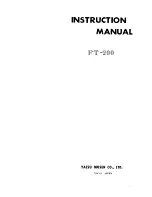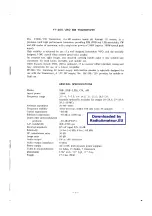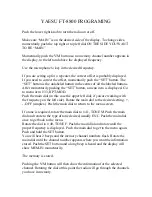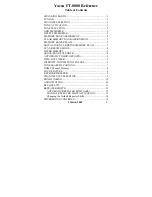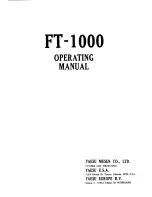
Lemon Microbrick Reference Guide
Page 10 of 20
Notice how the model handles with the stabilizer turned on. It may be less responsive on one or more axes.
Experiment with dual rate settings. Turn stabilization off and on to get familiar with its effects.
12. Fine tune stabilizer gain (if applicable)
Now make a series of flights to optimize the individual gain settings. This will involve repeated landings to adjust
each pot on the receiver, followed by retesting in flight, but the basic job can be done relatively quickly.
8
It’s a
good idea to keep notes.
If you encountered oscillation on any axis during the initial flight, turn down the gain a little for that axis. Then go
through the following steps:
1.
Increase the Rudder pot setting by about an “hour” (15°).
2.
Take off with stabilization OFF. Turn ON at a safe height with the model in level flight. Watch for oscillation
on the yaw axis (“tail wag”). Do a shallow dive to pick up speed and again watch for oscillation.
3.
Land and adjust the rudder pot as required. If there was no oscillation, even when diving, turn the pot up
another “hour” or so. If there was oscillation, turn the pot down.
4.
Take off and retest. You’re aiming to set the pot fairly close to the gain that just produces oscillation in
normal flying.
5.
When satisfied, go through the same procedure for the elevator pot.
6.
Finally follow the same procedure to set the aileron gain pot.
Specific Issues
Rudder Steering
For a model steered by rudder that does not have ailerons, the above instructions still apply but there are two
options:
1.
Set it up just like an aileron model as above but ignore all references to the Roll/Aileron channel. The aileron
stick will be inoperative, rudder is controlled by the rudder stick, and the model will correct for yaw in
stabilized mode with the rudder. For many stable models this will work well.
2.
Apply the Aileron
→
Rudder mix (Rudder Steering) as described on page 14. In this case two things happen:
a.
The Aileron stick now controls the on-board Rudder servo, AND
b.
When the model is disturbed in roll the rudder is used to give an opposite yaw correction. The
aerodynamic setup of small models is normally well suited to this approach.
Throttle Features
Throttle Safety
To minimize chances of the motor starting accidentally, the throttle safety feature on the internal
brushed
ESC
requires that the throttle stick be at low before the throttle becomes active and the motor will run.
This issue is handled by the external ESC in a
brushless
setup.
Low Voltage Cutoff (LVC)
On a
brushed
1s setup the motor will begin cutting in and out when the voltage drops to 3.2v. The actual motor
voltage at which this happens varies a little depending on the length and gauge of the battery wire because of
the voltage drop. In practice you will notice that the motor is pulsing at full throttle indicating the battery is
8
If you have an eight or more channel transmitter you can use Master Gain to help speed up the process of adjusting
the individual gains.





















